
For my self- portraits, I am inspired by FRANCESCA WOODMAN, CLAUDE CAHUN and MILICA MARKOVIĆ.

For my self- portraits, I am inspired by FRANCESCA WOODMAN, CLAUDE CAHUN and MILICA MARKOVIĆ.
The google definition of these words :
Masculinity – qualities or attributes regarded as characteristic of men or boys.
Femininity – qualities or attributes regarded as characteristic of women or girls.
Masculinities and femininities refer to the social roles, behaviours, and meanings prescribed for men and women in any society at any time. Such normative gender ideologies must be distinguished from biological ‘sex,’ and must be understood to be plural as there is no single definition for all men and all women. Masculinities and femininities are structured and expressed through other axes of identity such as class, race, ethnicity, age, and sexuality.

Masculinity
Masculinity is usually associated with being a “real man”; attributes like being stoic and unemotional, being physically strong, not showing weakness (quite often through emotion). However, it is said that following these traditional attributes of “being a man” can be harmful. Men are less likely to search for the help of a mental health specialist than women because of the idea that “masculine men” cannot show emotion.
However, there’s a growing population of men who are beginning to reject the traditional ideas of masculinity and redefining what it means to be a man.
Femininity
‘Femininity’ is a familiar term. Conversations about being feminine are common in everyday life and many people use the word ‘feminine’ to describe themselves and others. They may equate femininity with being a woman who embodies characteristics like being nurturing, sensitive, demure, or sweet. But femininity cannot be understood as a fixed set of essential traits that characterize all women.
As a scholarly concept, femininity can carry diverse meanings with numerous interpretations. Within the context of heterosexual relationships, performances of femininity can employ different scripts. These scripts act as guidelines for individual behaviour and social interaction. They are learned at an early age and reinforced throughout the life course. When examined as a whole, individual expressions of femininity reveal distinct patterns. These themes become reinforced throughout different social institutions such as media, education, religion, sports, and the workforce.

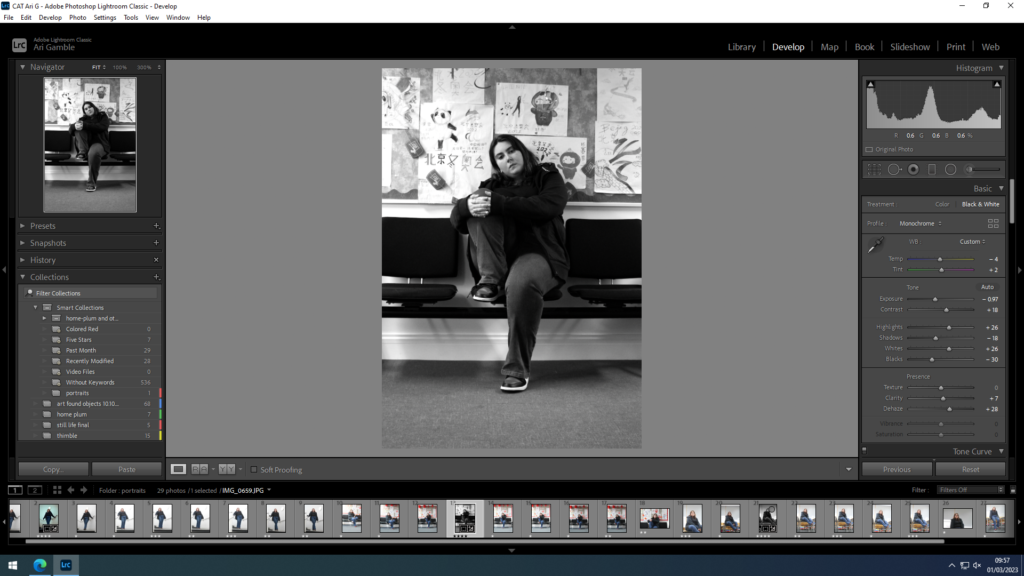
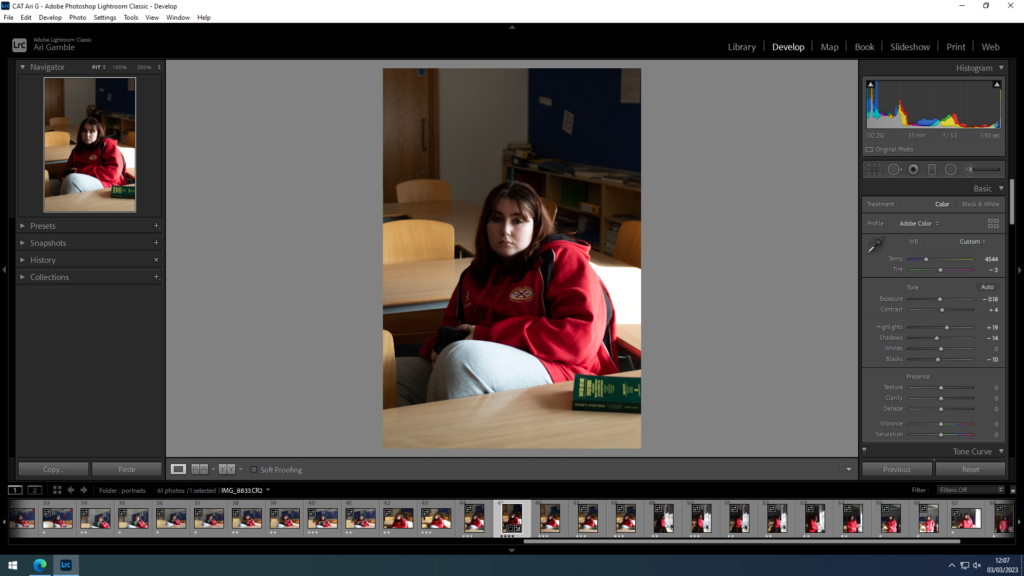


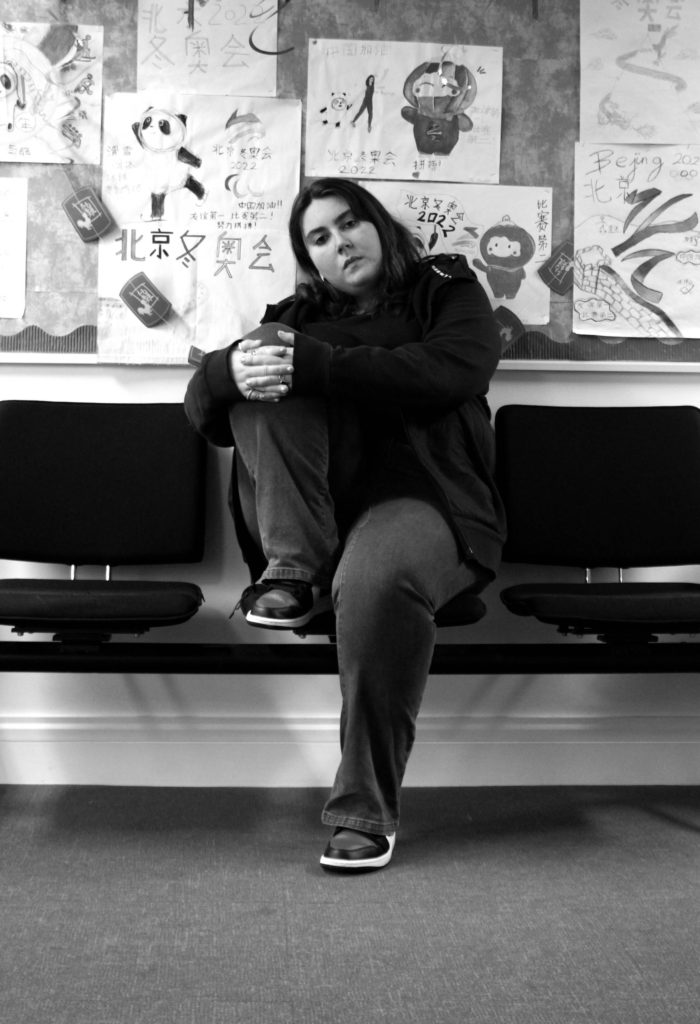

Exploring different areas of identity involves looking at what influences a person and their make-up and this has a variety of different manifestations.
Femininity vs Masculinity
The concept of contrasting femininity and masculinity in their respective intricacies can create very interesting studies, as they can both be interpreted in multiple different ways.
At its base level, and in its most generalised form, femininity is made up of emotive, nurturing and gentle traits, whereas masculinity is highly juxtaposed with this as it shows a more assertive and independent profile. ‘Traditional masculinity includes norms that encourage many of the aggressive behaviours whereas traditional femininity emphasizes aggression very little.’

In the presentative sense, the social constraints of what is expected of women consists of being small and slender with long hair, long eyelashes and as little body hair as possible, dressed in ‘feminine’ clothing which includes dresses and skirts. In Western society, is expected that women are dressed relatively modestly whilst also not appearing ‘prim’ or overly covered up. This contradiction is just one of many that is pushed on to women as a result of the patriarchy we have always have and most likely always will find ourselves in. The likelihood of sustainable change is at this stage not very realistically within reach because of the build up of these attitudes over time. Whilst it appears there is much more liberalism in this area in recent years, the ideas of what a woman (or man) should be, whether we would like to admit it or not, are irrevocably engrained into society. There can be changes made of course, and this is seen more and more as we move into what is seen as a more equal society. Frida Kahlo famously played with the ideas of female societal expectations in her Self-Portrait with Cropped Hair, 1940, among other works.
In contrast to this, we see the narrative pushed on to men as the complete opposite – with a need to be strongly built with short hair and nails. This is, in essence the appearance that lends itself to practical work, and of course this is where it differs from female presentation, as, in history, women have not been placed in hard labour roles whilst men have been expected to go out and hunt or craft for his family’s needs. Men are also expected to not show emotion in the same way that women are – it is seen as a weakness (perhaps demonstrating and furthering the agenda that women’s traits are presented as weak, especially when present in a man). This is important as it shows the damage that the patriarchy does not only to women, but to the men who created it, and this is demonstrated by the high suicide rates among young men. This is most often because they feel that it is their only choice; they cannot ask for help because of the culture surrounding this presenting it as a weakness, and thereby, a loss of their masculinity.
Therefore, there are clearly a lot of interesting ways artists can explore this topic because it is something that has a heavy influence on a person’s identity – no matter which gender someone is, the effect of it (either positive or negative) will be apparent on their available opportunities and wider life. Claude Cahun was an influential artist in this area of exploring the boundaries of gender and sexual stereotypes.
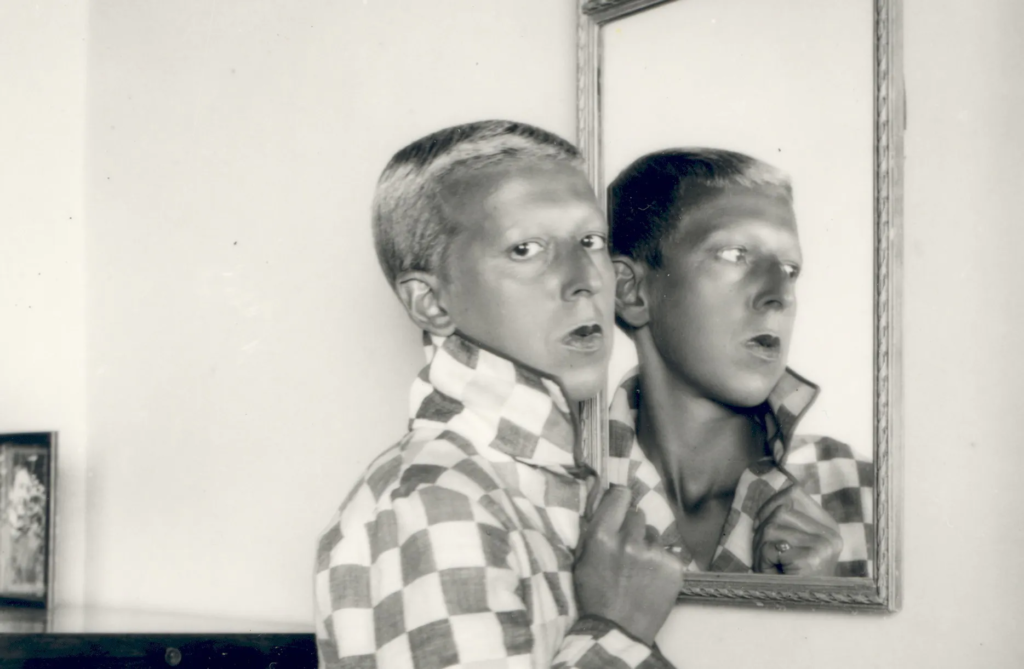
Environmental Influences
People’s identities are also influenced by the environment in which they exist, both in childhood and later life. Home life, relationships with others and place of upbringing all have impact on the way that one presents, expresses and sees oneself.
For example, someone who grows up in council housing will have a far different outlook on life than someone who had a more middle-class upbringing, similar to the likelihood that someone who is born into an abusive or broken home is to develop issues with self esteem or confidence whilst someone whose home life is content and settled is not as likely to have these issues.
Those who have close relationships with their family are much more likely to be influenced by their opinions and beliefs, and sometimes those who want to create distance from or already have negative relationships with their family can work to actively disagree with these outlooks. We see this manifested in choices in later life as well as who they choose to surround themselves with.

Also, the connection that people have with their own heritage is a strong source of inspiration for many artists across time as it allows them to look past what they may present themselves as and explore where they came from. One example of this is the work of Kemka Ajoku and specifically his series Finding Common Ground which focuses on how he feels distanced from his white peers as a child of African immigrant parents and his relationship with the idea of ‘home’.
This then links to the importance of cultural influences on identity – specific cultural practices within the home will form an integral part of a person’s make-up. For example, a heavily Christian upbringing will have the effect of either making the subject extremely modest in how they present or perhaps the opposite, where they feel the need to rebel against this. Alternatively, the exploration of one’s family’s culture and lifestyle can create interesting studies and one example of this is the multi-media work of Nilupa Yasmin, who draws inspiration from her own South Asian heritage and how it manifests in her life in South London.

Political Influences
This branch of identity is, like the others, dependent on the conditions of the others – i.e., someone’s political standpoint relies upon their identity (gender, race, upbringing, religion, etc.) because this dictates their opportunity, which is essentially the basis of democracy.
This links to how one presents oneself as usually someone who is more liberal in their political thinking will differ strongly in style to someone far more conservative. Therefore, it is an aspect of identity that artists can take inspiration from. It also links to ideas of identity politics, which I will explore later on.
Identity politics is how peoples views, values, gender, sexual orientation, race, social background and class has separated and divided people in a negative way, even though people should be living in unison and acceptance of others.
Peoples views are always different which can be seen as a good thing that everyone has their on opinion and ability to speak up but when there opinion is negative and impacts people in a negative way it begins to create a negative association
A culture war is a cultural conflict between social groups and the struggle for dominance of their values, beliefs, and practices. It commonly refers to topics on which there is general societal disagreement and polarization in societal values.
The term is commonly used to describe contemporary politics in western democracies with issues such as abortion, homosexuality, transgender rights, pornography, multiculturalism, racial viewpoints and other cultural conflicts based on values, morality, and lifestyle being described as the major political cleavage.

The definition of ‘femininity’ according to Wikipedia is ‘a set of attributes, behaviours, and roles generally associated with women and girls’, however this definition has been criticised by many people throughout history, as it causes it to be a very general and constricting term. The idea of femininity is a social construct, and people are slowly realising (especially younger generations who are typically more open minded) how the term doesn’t only surround women- but people of all genders and it is slowly becoming a much more fluid term. Despite there still being many people who have very traditional views, many artists (such as photographers) have being bringing light to the topic and opening peoples eyes. Furthermore, the opposing word ‘masculinity’ is defined as ‘is a set of attributes, behaviours, and roles associated with men and boys’, the same definition but for men/ boys.
Although some people believe there is one ‘correct’ definition of both femininity and masculinity, each culture has its own views on the terms, some of which even completely contradict each other. Moreover, any human can portray both feminine and masculine traits. Gender stereotypes link in a lot with femininity and masculinity, which can be very harming to both sexes, especially when the people surrounding them pressure them into presenting a certain way. This is one of the reasons why younger generations have started to challenge these social concepts, creating new definitions and meanings for these terms as well as breaking stereotypes. I believe everyone has and needs aspects of both femininity and masculinity, since they are simply human values which are put into stereotypical sections.

the fact of being who or what a person or thing is.
In the past, identity had a very different and less fluid meaning however slowly over time, people began to express themselves much more openly and proving that your identity isn’t just who you are born as and can be developed throughout your life. Identity is mostly formed during your childhood, when your opinions are easiest to influence and when you gain experiences from the people around you. This is when your cultural identity is formed, learning your culture from your parents and close family members.
Your teenage years, are where the majority of your identity is formed, your gender identity and sexuality shaping with the influence of the people you surround yourself with as well as the internet. It is seen as the hardest time in a persons life, as dealing with puberty and the development of your identity can be overwhelming for some. It is especially hard for people who don’t feel as though they fit in with the heteronormality of society, and experience gender dysphoria and the questioning of their sexuality, especially if they have no support.
Artists, especially photographs have has a massive impact on how society views femininity and masculinity, showing how traditional views and stereotypes aren’t always accurate and shouldn’t be used to define people. There were many photographers throughout history who created their own meaning for femininity and masculinity.
Claude Cahun was one of the main photographers that explored their own femininity and masculinity, as well as showing that it is normal to be a mix of both. Despite their work not being seen during their life and being destroyed by the Nazis (since Cahun was an activist during their life), they became a famous artist after their death in 1954 and still influence many to this day. They once said: “under this mask, another mask; I will never finish removing all these faces”, showing how they had many layers of both feminine and masculine traits. They experimented with clothes and hairstyles, showing both sides of their personality and identity.


Cindy Sherman is another important photographer as during her career she explored the stereotypes surrounding women in America during the late 20th century. She creates many different personas, creating self- portraits that resembled each of them. Through her photographs, she showed us how women are expected to be both beautiful and elegant while also being caring- in other words the stereotypical housewife.



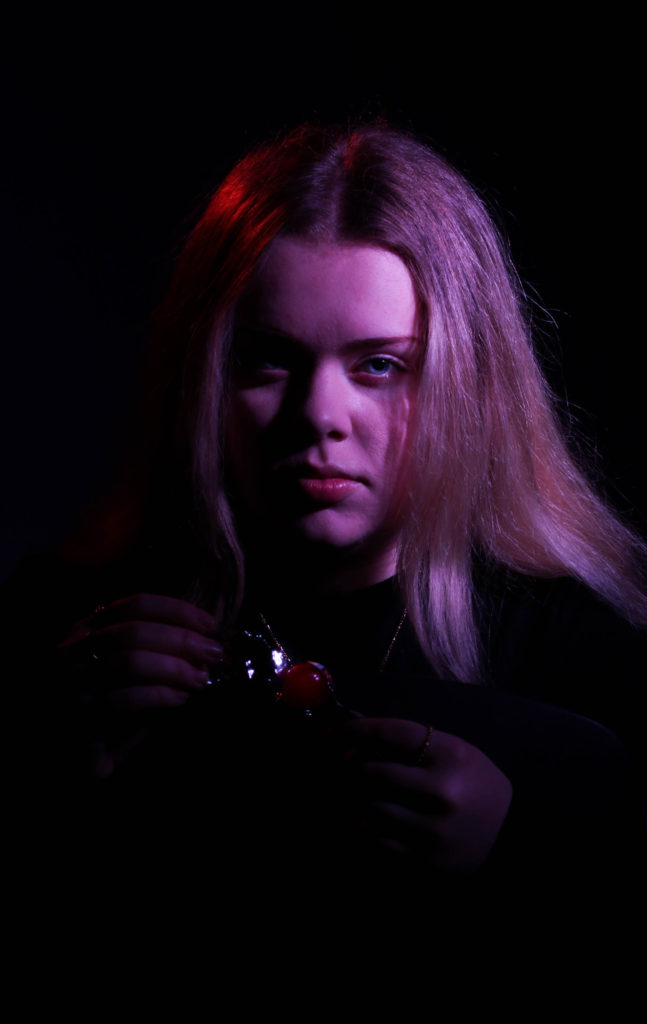



Throughout time, there has been a variety of reinforced stereotypes of the sexes. Typically, focussing on women being portrayed as weak or soft and men being portrayed as strong.
Even colours, which have been associated with femininity and masculinity. For example, femininity is typically associated with lighter colours, like pink or purple. Whereas masculinity may be associated with darker colours, typically blue.
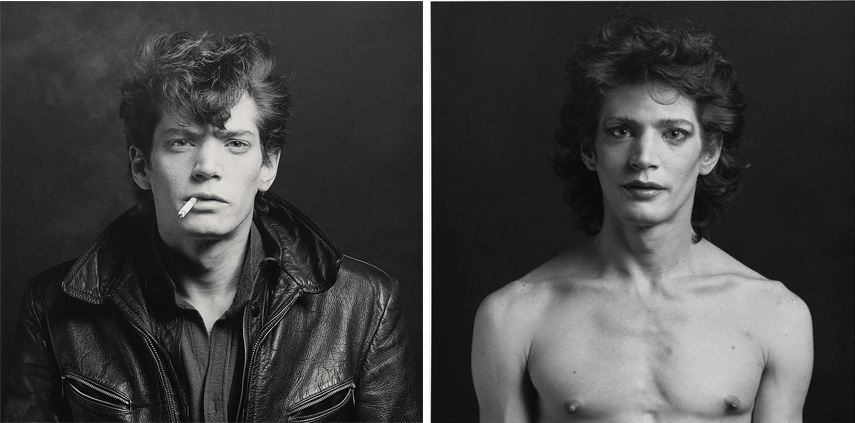
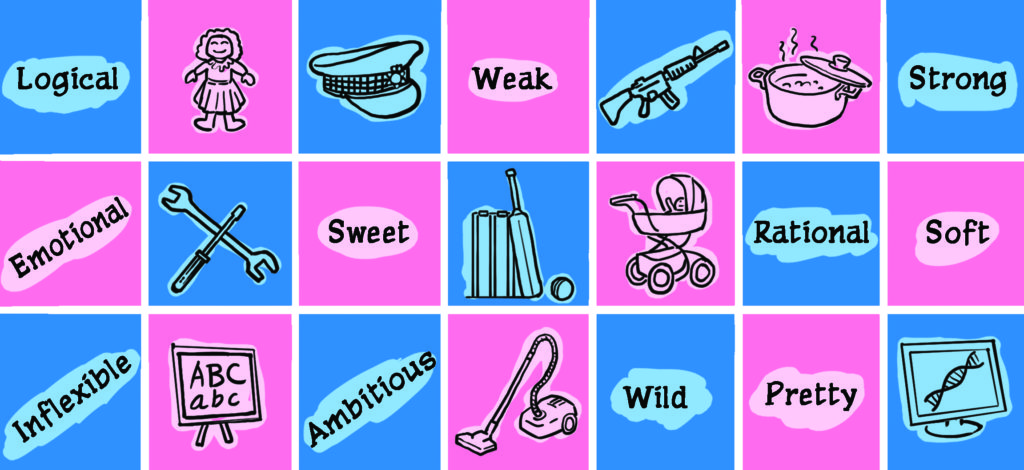
Femininity
Femininity is defined as a set of attributes, behaviours, and roles generally associated with women and girls. It is the quality or nature of the female sex.
Femininity to a man may be considered someone who possesses qualities that would be considered more feminine than masculine. For example, this could be presented as someone who possesses a high emotional intelligence, taking proper care of oneself, or filling roles that aren’t considered to be conventionally masculine. However, there is also a visual aspect to femininity in men.

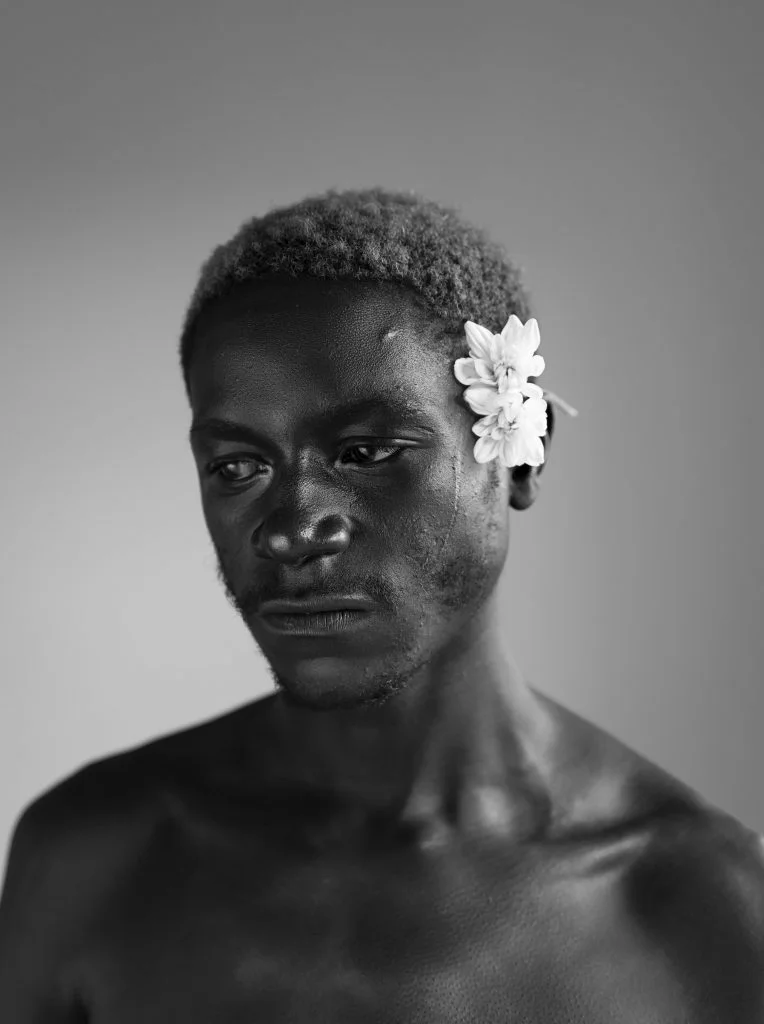
Masculinity
Masculinity is defined as a set of attributes, behaviours, and roles associated with men and boys. For example; ambition, acquisition of wealth, and differentiated gender roles. It is the quality or nature of the male sex.
Masculinity in women may be considered someone who possesses traits that would be considered more masculine than feminine. They may be masculine in appearance, have masculine interests, prefer the company of men, and/or perform masculine tasks or jobs.



Androgyny
People may choose to identify with both masculine, and feminine traits. Typically, androgyny is a term used to describe a person whose appearance or clothing has elements of both femininity and masculinity. It refers to sex-role flexibility and adaptability.
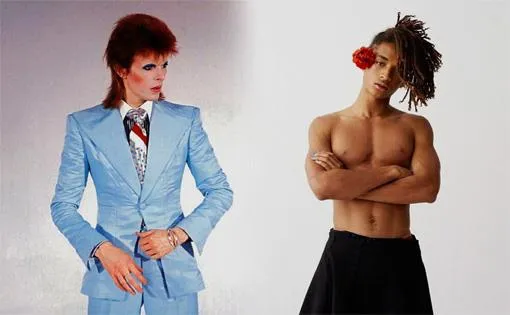
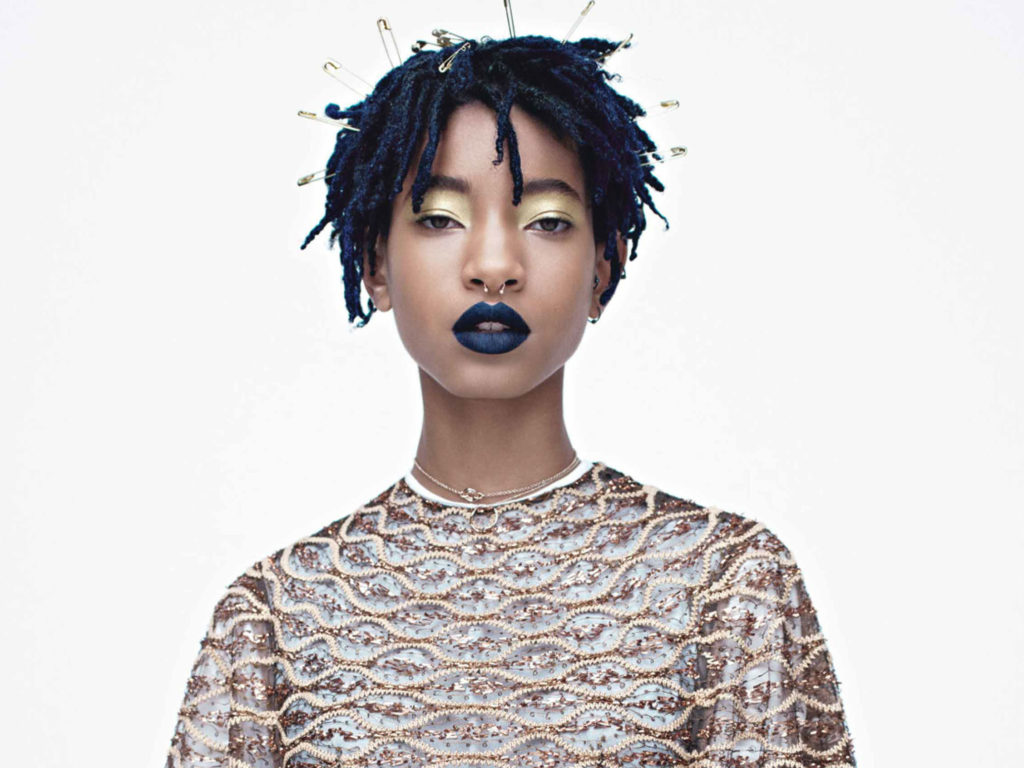
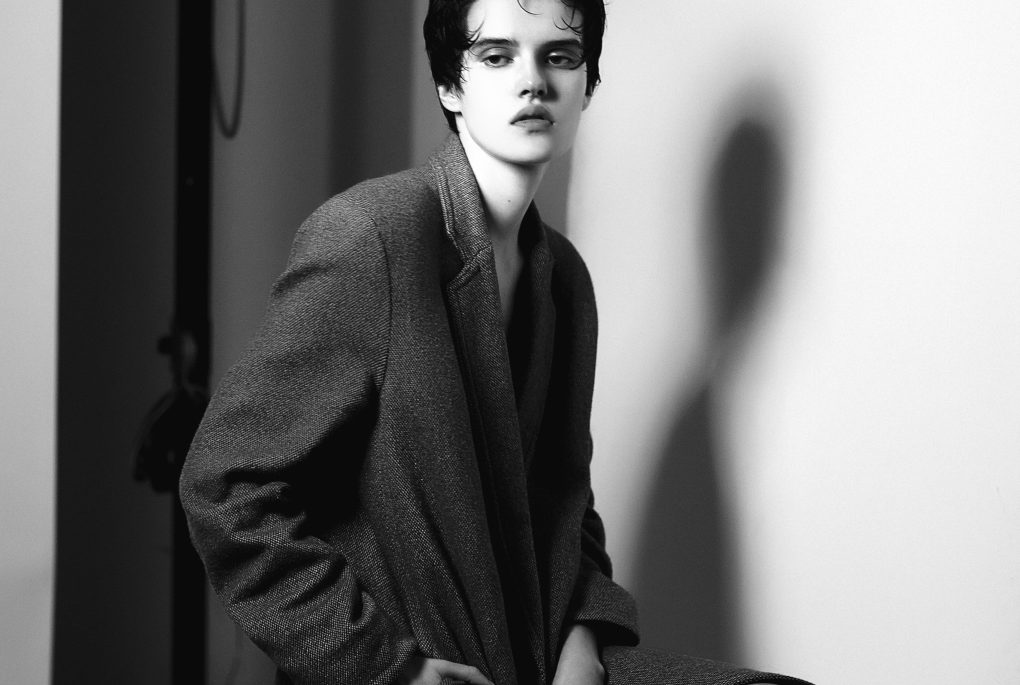
Environmental influences
Our environment influences our own beliefs, values and perceptions to form a redefined sense of self. Environment and the people we surround ourselves will therefore impact our identity and what groups or ideologies we identify ourselves with. Growing up with people, like parents, can influence you into forming opinions or identifying with certain groups.
However, there is an individual aspect in your identity. Identity is our sense of who we are as individuals and as members of social groups. So, though there may be environmental factors that influence us, we also have control over what and how we choose to identify/identify with.
Our identity is what makes us unique, which is why it is very important. It separates us from others and allows us to have independence and individuality in who we are as a person.
Traits such as nurturance, sensitivity, sweetness, supportiveness, gentleness, warmth, passivity, cooperativeness, expressiveness, modesty, humility, empathy, affection, tenderness, and being emotional, kind, helpful, devoted, and understanding have been cited as stereotypically feminine.

qualities and attributes regarded as characteristic of men. When we talk about masculinity, we’re talking about a person’s gender. Gender is a social construct, and is one of many ways we as humans make meaning and create social structures.


Binary opposites are a pair of concepts that are opposite to each other. These concepts are usually thought of as a mutually exclusive which means you can only be one or the other. The idea was popularized in the 20th century by structuralist thinkers like Claude Levi-Strauss, who argued that binary oppositions are fundamental to human thought and culture.
